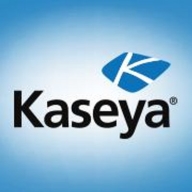

Kaseya Traverse and Sumo Logic Observability compete in the network and infrastructure monitoring category. Kaseya Traverse has an advantage in pricing and support, while Sumo Logic Observability is superior in features and performance value.
Features: Kaseya Traverse includes robust network monitoring, customization, and automation functionalities, making it suitable for diverse environments. Sumo Logic Observability features advanced analytics, AI-driven insights, and comprehensive monitoring solutions.
Room for Improvement: Kaseya Traverse could enhance its analytical capabilities, UI design, and scalability options. Sumo Logic Observability may improve its user training resources, reduce the learning curve, and offer more competitive pricing.
Ease of Deployment and Customer Service: Kaseya Traverse provides straightforward deployment with excellent support, suitable for small to medium enterprises. Sumo Logic Observability offers a cloud-native deployment model and responsive customer service, ideal for businesses seeking scalable deployment.
Pricing and ROI: Kaseya Traverse is cost-effective with competitive setup costs and appealing ROI for budget-conscious firms. Sumo Logic Observability involves higher initial expenses but offers premium features that justify the long-term investment with improved operational efficiency.
| Product | Market Share (%) |
|---|---|
| Sumo Logic Observability | 0.3% |
| Kaseya Traverse | 0.4% |
| Other | 99.3% |


| Company Size | Count |
|---|---|
| Small Business | 1 |
| Large Enterprise | 7 |
Immediately identify impacted IT services using insights based on rich data analytics of events such as SNMP traps, Windows events and Syslogs. Resolve faults quickly via NetFlow enabled root cause analysis across cloud, on-premise, hybrid cloud and virtualized IT environments.
Sumo Logic Observability offers advanced monitoring solutions with features like integrated dashboards and querying capabilities, though presents a learning curve compared to alternatives. Designed for efficient log aggregation and analysis, it provides near-real-time updates facilitating improved incident resolution.
Sumo Logic Observability stands out with its ability to unify teams through a single platform, offering features that include customizable dashboards and valuable apps. It provides powerful log tracing and centralized management, designed for organizations focused on log aggregation, analysis, and expanding SIEM capabilities. While it has a steeper learning curve compared to some competitors, it excels in tailored integrations that enhance log searches. Users find themselves able to monitor, automate, and centralize log repositories for effective debugging. Despite its strengths, improvements in data enrichment and documentation organization are needed as current query functions can be slow, impacting efficiency. Users have also mentioned needing pre-built dashboards and better tab management for enhanced functionality. Cost management remains a notable consideration for users evaluating Sumo Logic Observability.
What features make Sumo Logic Observability effective?Sumo Logic Observability is implemented across industries predominantly for managing and analyzing extensive data sets, offering capabilities critical for SIEM activities and security examinations. By facilitating quick data visualization and transaction tracking, organizations in sectors such as finance, healthcare, and technology benefit from its robust framework to support infrastructure logging and large-scale data management, contributing to effective monitoring and system operations.
We monitor all Cloud Monitoring Software reviews to prevent fraudulent reviews and keep review quality high. We do not post reviews by company employees or direct competitors. We validate each review for authenticity via cross-reference with LinkedIn, and personal follow-up with the reviewer when necessary.